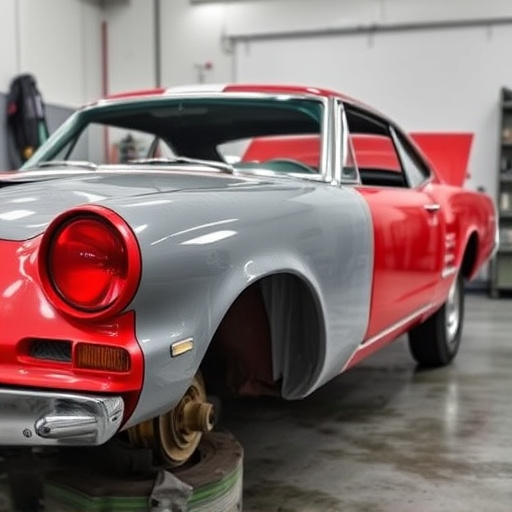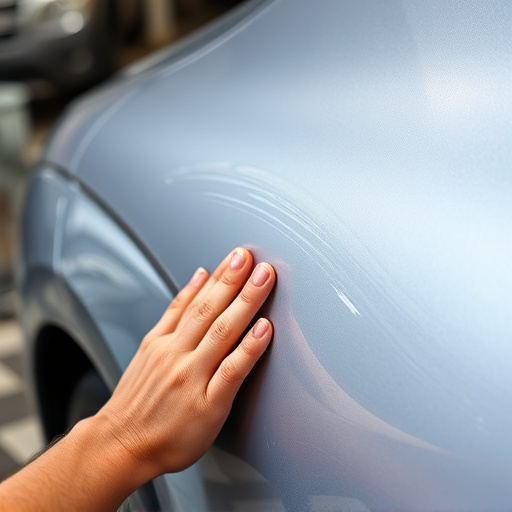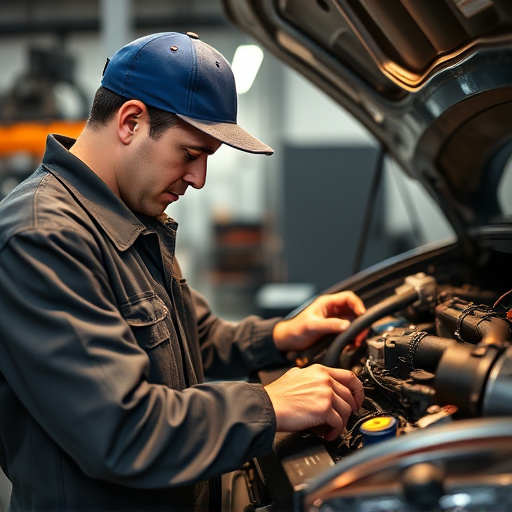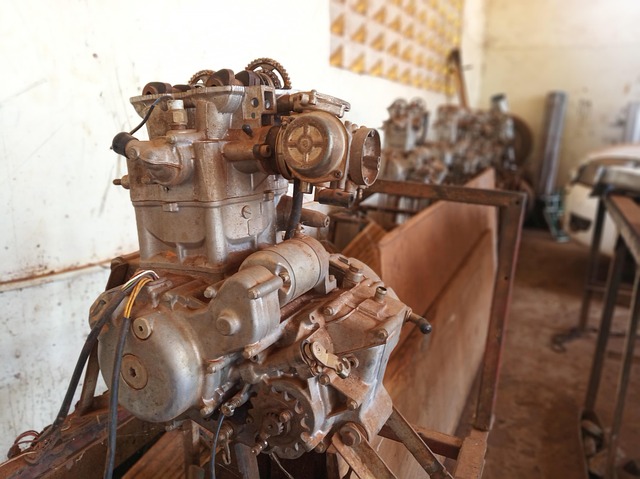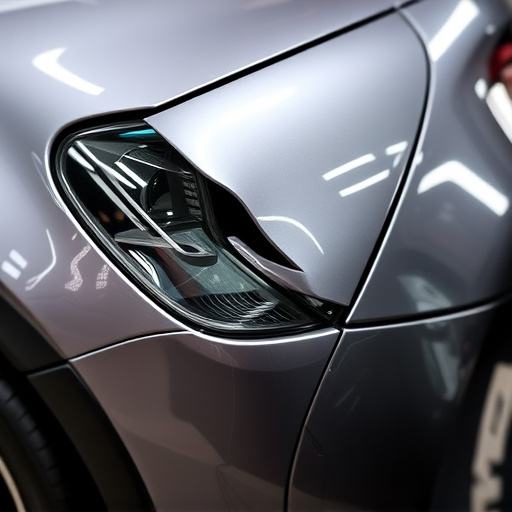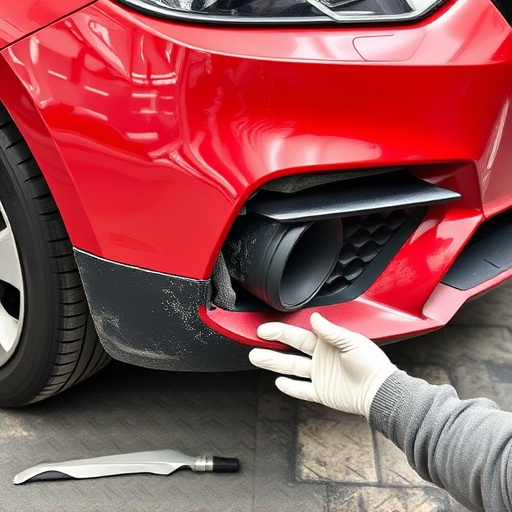The Tesla Black Trim restoration process involves meticulous care using specialized tools to avoid scratches or damage. It begins with thorough cleaning and inspection, followed by precise removal of damaged parts without affecting surrounding materials like paint or glass. Skilled technicians prime and repaint each touchpoint to match factory specifications, preserving the trim's elegance and aesthetic value. Key steps include avoiding direct contact between paint and glass, utilizing paintless dent repair for pristine finishes, and ensuring seamless integration with the vehicle's design.
“Tesla Black Trim Restoration: A Delicate Process Demanding Precision The sleek, elegant black trim adorning Tesla vehicles is both a design statement and a functional element. However, its delicate nature necessitates careful handling during restoration. This article guides you through the process, focusing on avoiding critical mistakes—specifically, paint and glass contact—to ensure a successful Tesla black trim restoration that maintains both aesthetics and integrity.”
- Understanding Tesla Black Trim: Materials and Vulnerability
- Restoration Process: Avoiding Paint and Glass Contact
- Best Practices for a Successful Black Trim Restoration
Understanding Tesla Black Trim: Materials and Vulnerability
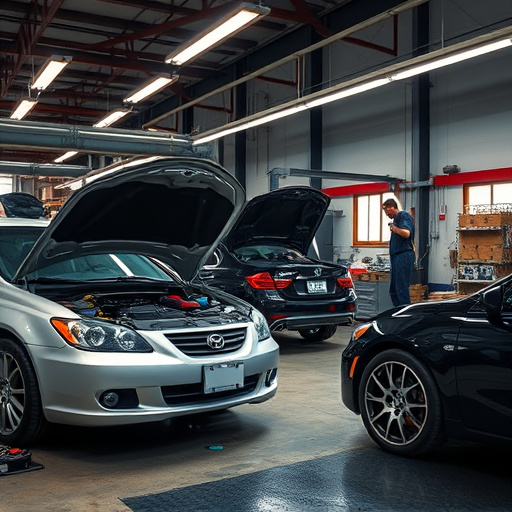
Tesla Black Trim: A Delicate Blend of Materials
The iconic Tesla Black Trim is more than just a cosmetic feature; it’s a sophisticated blend of high-quality materials designed to enhance the vehicle’s aesthetic appeal and durability. This distinct trim, often seen on the car’s exterior, is crafted from advanced composite materials, primarily a durable polycarbonate blend infused with carbon fiber reinforcements. This unique composition not only contributes to Tesla’s signature sleek design but also offers exceptional resistance to scratches, chips, and other forms of surface damage.
However, while its durability is a significant advantage, the close-knit nature of the black trim makes it particularly susceptible to certain restoration challenges. Even minor contact with paint or glass during the restoration process can leave unsightly marks or imperfections. Auto enthusiasts and vehicle body shops specializing in Tesla black trim restoration must therefore employ meticulous techniques, including precise tools and specialized auto maintenance methods, to ensure a flawless outcome without compromising the trim’s integrity, maintaining the vehicle’s original look as if it were straight from the factory.
Restoration Process: Avoiding Paint and Glass Contact
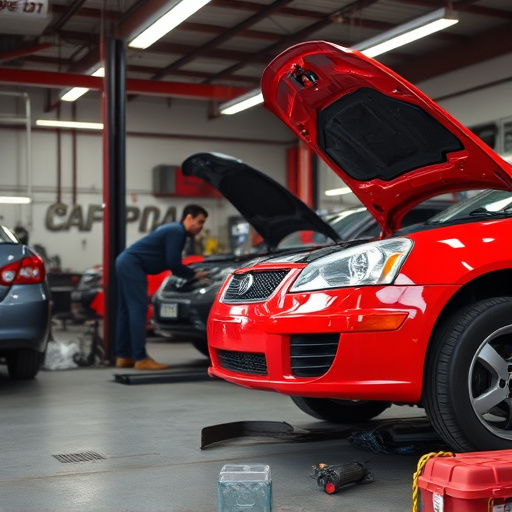
Restoring Tesla black trim involves a meticulous process that demands precision and attention to detail. The primary goal is to achieve a seamless fusion with the existing vehicle components, particularly avoiding any contact between restoration materials and paint or glass surfaces. This is crucial as direct contact can lead to unsightly marks or even damage to the delicate finish.
During the restoration, specialized tools and techniques are employed to carefully remove damaged or faded trim pieces without affecting the surrounding areas. Skilled technicians ensure that every touchpoint is meticulously prepared, primed, and painted to match the vehicle’s original specifications. The process requires a deep understanding of auto frame repair and collision repair services, ensuring that the restored trim seamlessly integrates into the car’s overall aesthetic, preserving its value and elegance.
Best Practices for a Successful Black Trim Restoration
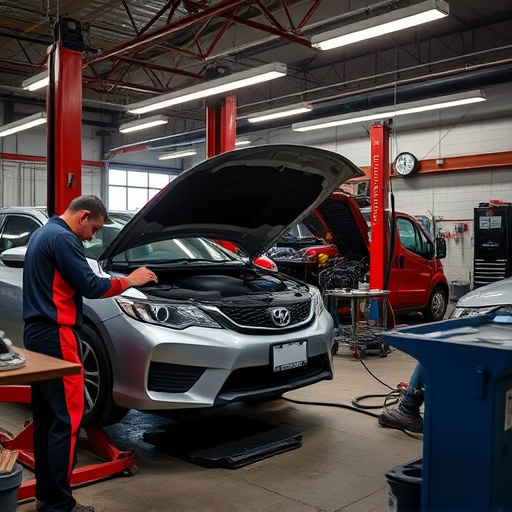
For a successful Tesla black trim restoration, careful preparation is key. Begin by thoroughly cleaning and inspecting the affected areas to identify any damage or debris. Remove all loose particles using a soft-bristled brush or compressed air cans to ensure a clean surface for restoration. This meticulous step is crucial in achieving a pristine finish.
During the restoration process, it’s imperative to avoid direct contact between paint and glass. Tesla’s black trim often features delicate designs near windows, so a strategic approach is necessary. Utilize specialized tools designed for paintless dent repair, which allows for precise adjustments without marring the surrounding paintwork or causing further damage. This technique, along with meticulous handiwork, ensures the restoration of the car body to its original aesthetic splendor, enhancing the overall appearance of the vehicle restoration project.
When undertaking a Tesla black trim restoration, it’s paramount to prioritize the material’s unique properties. By understanding the delicate balance between its matte finish and vulnerability to paint and glass contact, restorers can achieve exceptional results. Following the outlined best practices ensures a successful restoration, preserving the aesthetic appeal and value of your Tesla’s iconic black trim.
